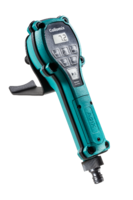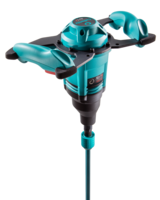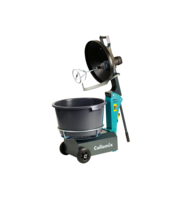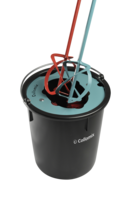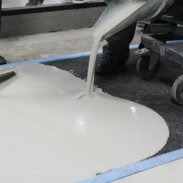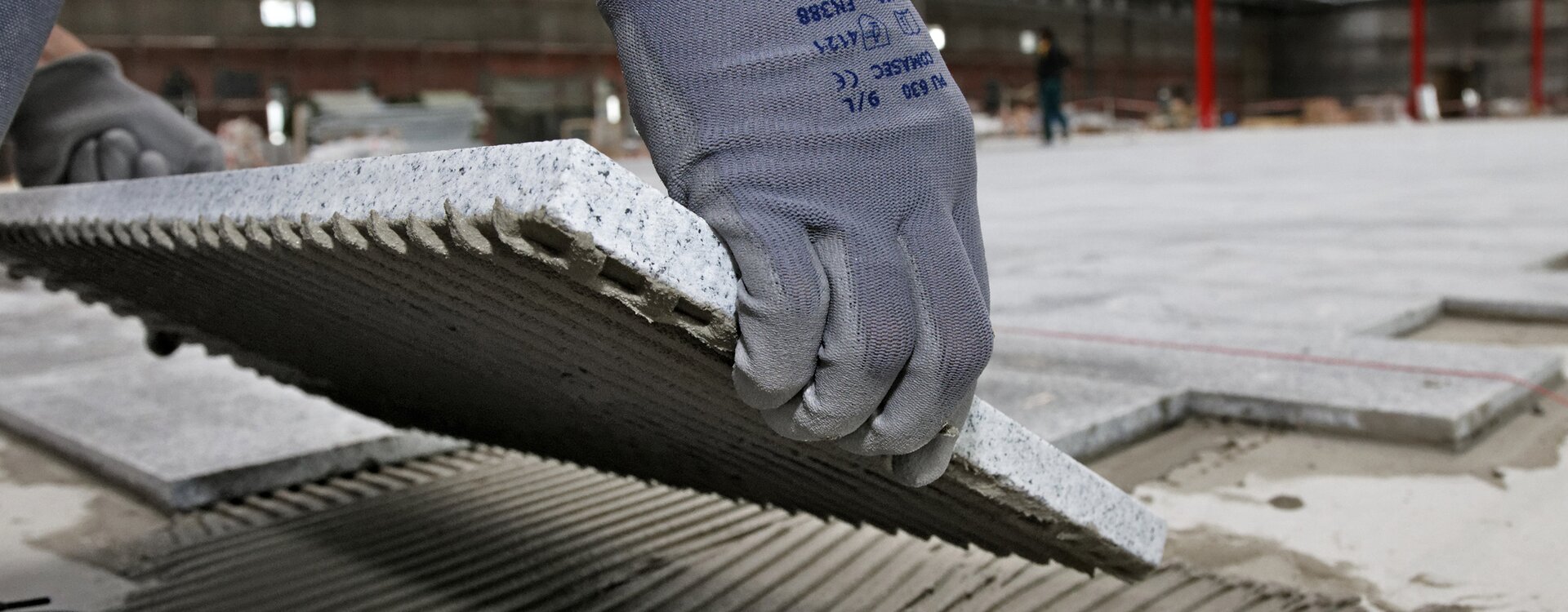
LAY TILES MORE EASILY WITH OPTIMALLY MIXED TILE ADHESIVE
THE IMPORTANCE OF PERFECTLY MIXED TILE CEMENT FOR YOUR WORK
When laying tiles, the use of optimally mixed tile adhesive is crucial for a professional and durable result. Due to the large number of different cementous mortars, the information provided by the material manufacturer on the packaging or on the product data sheet must always be taken into account. Below are some important aspects to consider:
The right choice of Tile mortar:
Industrially produced tile adhesives are usually offered as so-called factory dry mixes, filled in bags. Choose the tile adhesive that is right for your project. Take into account factors such as indoor or outdoor use, type of ceramic, tile format, substrate and intended use. The basic materials of tile or flexible adhesive are cement and fine sands. In most cases, chemical plastics are added to these dry mortars in order to achieve very specific properties. Other adhesives can also be dispersion or resin-based. A special form of cement tile mortar is the flexible adhesive. In contrast to the pure cement adhesive, it contains appropriate plastic additives, which ensure that it has a much greater adhesive strength and better flexibility. For example, on smooth substrates such as old tile coverings, they adhere better with a flexible mortar than with a regular cement adhesive.
Tile material is also subject to change:
What has changed to an unprecedented extent in recent decades is the tile and slab material to be laid! And with this increasing variety, the triumph of densely fired porcelain stoneware and the ever-increasing formats, the demands on the performance of the laying mortar have also grown. Plastic modification was particularly necessary due to the comparatively poor adhesion of purely cementitious adhesive mortars to porcelain stoneware. This was also the reason why so-called "flexible mortars" became firmly established on the market.
The mixing process
Mixing ratio:
Cementitious mortars must always be mixed on site. As the prebagged material is already formulated, there is nothing further for you to do. However, you must follow the manufacturer's instructions for the correct mixing ratio of adhesive and water. The amount of water must be measured exactly, as too much water in the mixture can reduce the drying and adhesive properties of the adhesive and cause cracking or other damage later on. Adding too much water to the mixture should always be avoided. It is highly recommended to use a measuring device such as a measuring bucket or a dosing device (AQiX) to determine the correct amount of water.
Mixing:
Use a sufficiently large and clean mixing bucket to mix the adhesive mortar. First put the water in the bucket and then the powder. Use an electric mixer to drive a mixing tool suitable for tile adhesive (e.g. paddle type KR). The design of the paddle is a decisive factor in the quality of the mixing result. Select the paddle size to suit the intended mixing quantity. Using a mixer with vertical components lets you apply a high shear force to the material. This directly counteracts the formation of lumps in the mixture. In this way, you get a consistently homogeneous, smooth mass without lumps in a short time. The consistency should be soft-creamy to soft-plastic. The larger the tile format, the stiffer the adhesive must be so that the tile does not sink too much into the adhesive.
If larger quantities of tile adhesive are required, e.g. when laying large format tiles, the use of an automatic mixing machine is recommended. This relieves the craftsman from having to mix manually. When selecting the machine to be used, make sure that it is capable of homogenising the adhesive smoothly and without lumps (e.g. AOX-S).
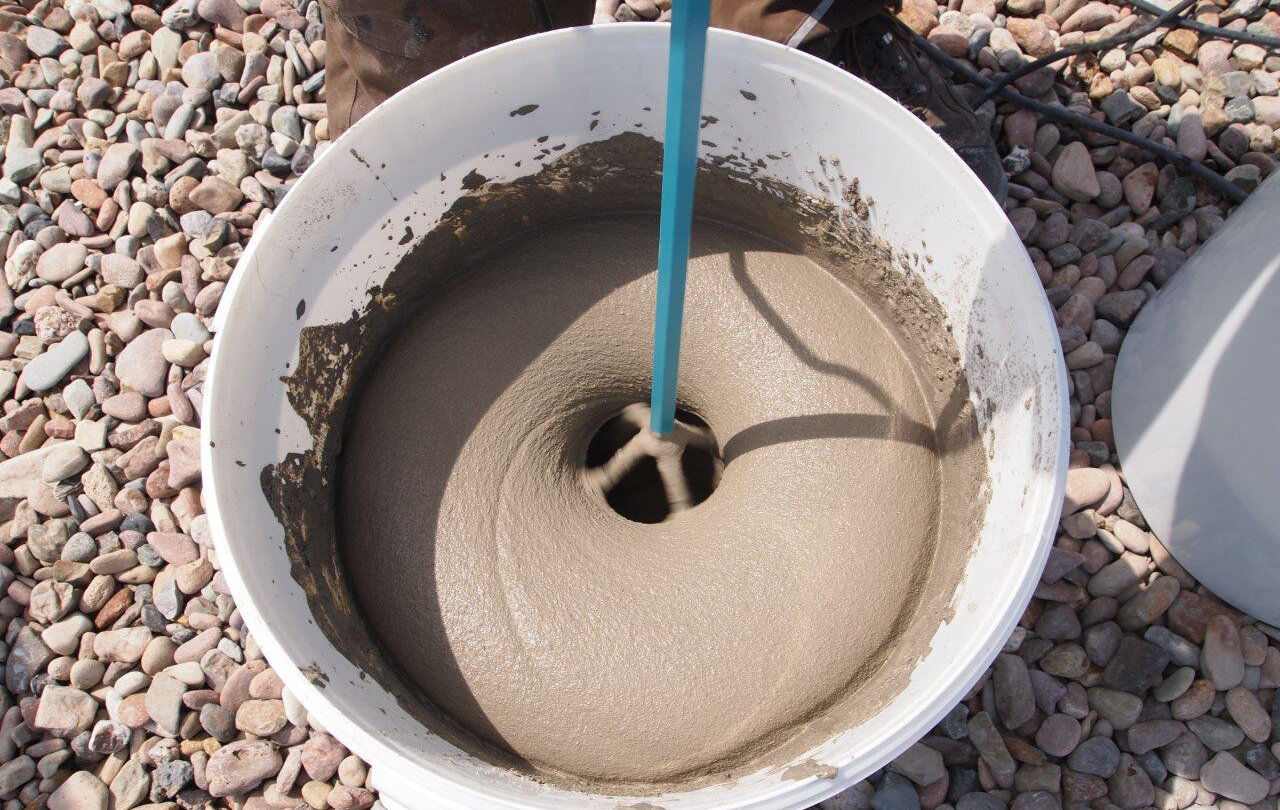
Creamy and lump-free - that's how tile adhesive should be.
Maturing time:
Allow the tile adhesive to rest for a few minutes after mixing to ensure optimum workability. The plastic additives in the flexible adhesives in particular need a little time to fully develop their properties. Mixing again after the maturing time is also strongly advised. Now the adhesive is ready for use. One more note: the better mixed the adhesive is, the longer it can be worked with.
Applying the adhesive and laying the tiles correctly.
Application:
Apply the tile adhesive evenly to the substrate with a notched trowel. Follow the material manufacturer's instructions for selecting the size of trowel teeth to be used. The substrate and the size of the tile to be laid (ceramic, stoneware or even natural stone) determine the laying method, whether thin-bed, medium-bed or thick-bed method. It is important that the tile adhesive is applied over the entire surface, otherwise hollow spots will form under the tiles. This can lead to a hollow sound, moisture can collect underneath, which has an unfavourable effect, or the ceramic can break due to mechanical stress.
Laying:
When laying the tiles, the laying method plays a decisive role. Ready-mixed tile adhesive is applied with a notched trowel. The tines come in different sizes for applying the material correctly. If the substrate to be covered is absolutely even and dimensionally stable, the adhesive is applied using the so-called thin-bed method. This has the advantage that less adhesive is needed and the tiles can be laid quite quickly. The floating/buttering method is also frequently used for laying tiles, in which both the substrate and the back of the tile are coated with adhesive. In this way, the tile can be pressed firmly into the adhesive bed, a full-surface bond is created and the tile itself can also be adjusted accordingly.
For large-format tiles, natural stone tiles, outdoors or on uneven substrates, the so-called thick-bed method is used. Thick-bed mortars have high strength and allow level alignment of uncalibrated tiles.
Drying time:
Depending on the type of adhesive, the drying time can vary from a few minutes to several hours. Be sure to observe the information provided by the manufacturer and the product information. Allow the tile adhesive to dry sufficiently before you start grouting.

